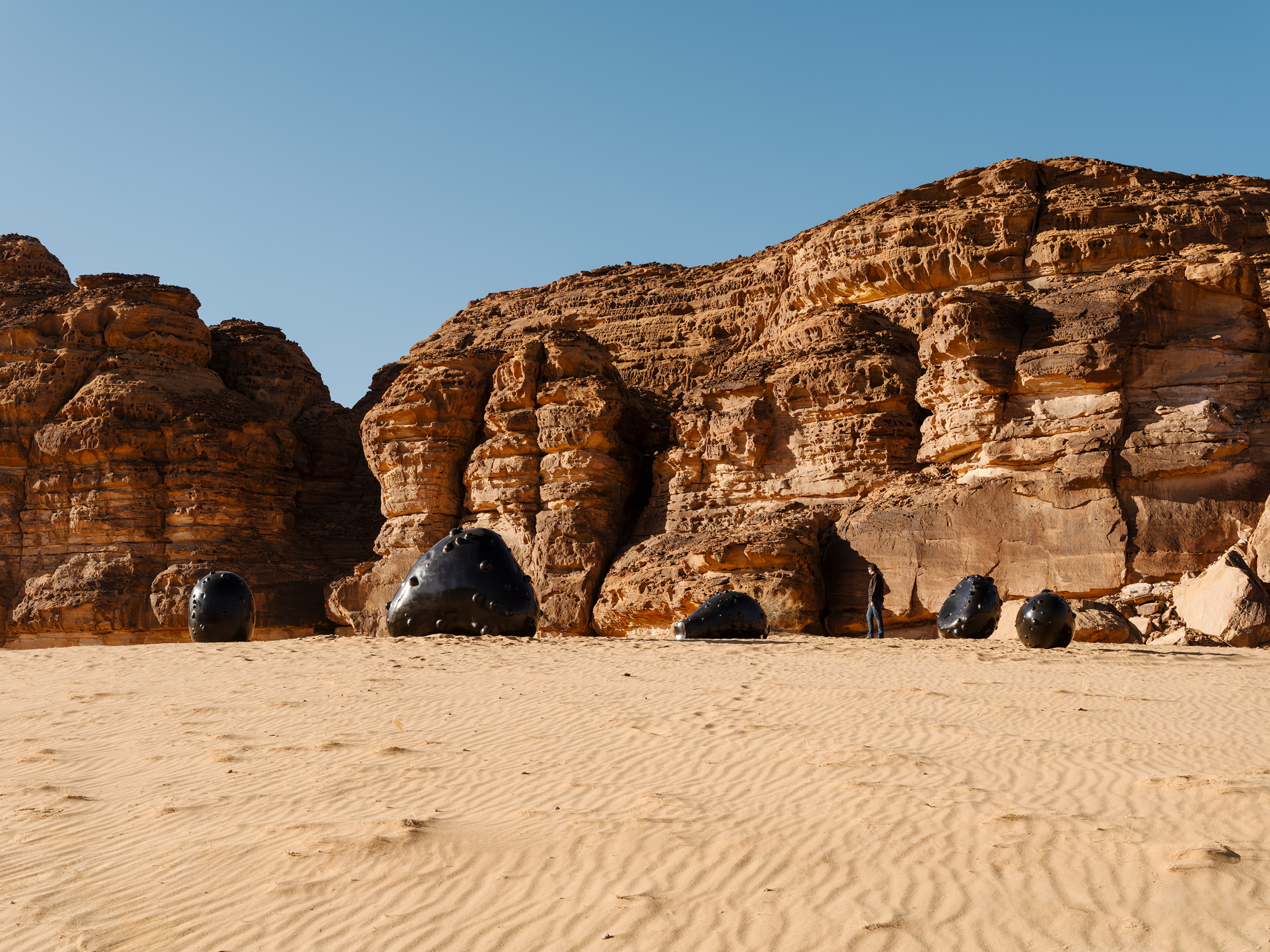Desert X AlUla 2024 has closed. This installation is no longer on view.
Monira Al Qadiri
W.A.B.A.R.
In the 1930s, the British explorer Harry St. John Philby crossed the vast expanse of the Empty Quarter desert – located in between Saudi Arabia, Yemen, Oman, and the United Arab Emirates – looking for the ruins of an ancient city: the “Atlantis of the Sands.” From the locals he heard stories of a great culture that once flourished in this desert: a people who had built palaces and castles, who lived an extravagant and decadent life. One day a divine punishment befell them and their city was destroyed, only leaving the black burnt pearls of the necklaces of the ladies that lived there.
Philby finally reached the site after an arduous journey. He was shocked not to find the ruins of an ancient city, but several huge craters in the ground that he believed to be volcanic. He was disappointed and picked up the shiny black “beads” spread across the ground which he thought were volcanic material mistaken by locals for pearls. He presented them to a specialist at the British Museum in London, who informed him that the pearls were actually meteorites from outer space. Philby then gave them the name “Wabar Pearls” after the site of Ubar where he found them, and they became collectible items amongst meteorite enthusiasts over time.
Inspired by this story, Al Qadiri recreates the Wabar Pearls as giant black objects spread across the sandy landscape of AlUla, almost as if they had fallen out of the sky. For the artist, the work is meant to inspire the same sense of mystery and wonder that the people of the Empty Quarter had felt upon seeing these strange objects, and the magical stories one might concoct because of their presence.



